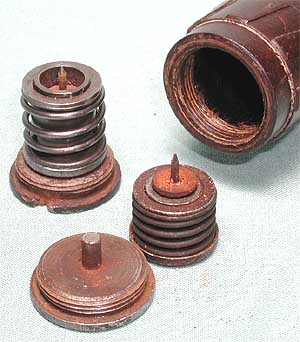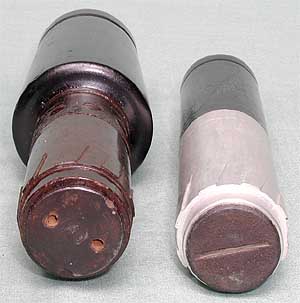
I understand there is a wooded practice version as well.
It was introduced in November 1942.
Below that is the earlier Gewehrpanzergranate 30,
produced in conjuntion with the 30mm HE Gewehrsprenggranate in February 1942. Intended as a H.E.A.T. alternative to the
H.E. round, it may have been effective against lightly armored vehicles
but was obsolete almost from the onset.
It is sheet metal construction with an aluminum shaft. (This
warhead is repainted)


